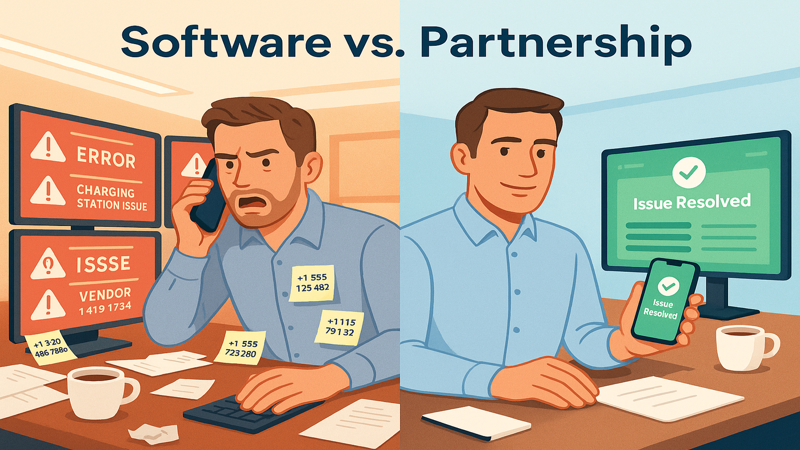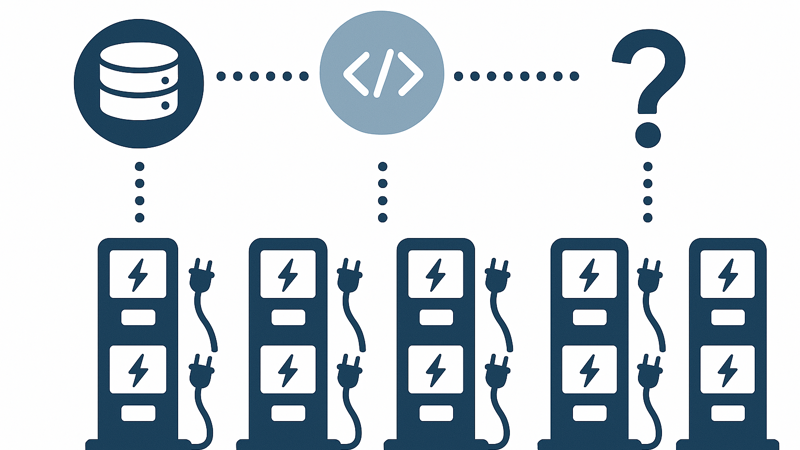
What the 1998 Competition Act means for EV
What is the Competition Act 1998?
The Competition Act 1998 was introduced to combat market monopolies in the UK, and to promote fair competition across the British economy. It includes clauses prohibiting the abuse of dominant market positions, and targets attempts from companies to secure long-term deals without opportunity for interception or fair competition from other companies.
The Act is enforced by the CMA (Competiton and Markets Authority), a Government branch with the power to implement penalties on companies deemed to breach compliance with the act.
Why is it relevant to the EV industry?
You may have seen news coverage on the issue this week, but the CMA has issued warnings across the EV industry advising adherence to the act. These warnings come alongside a legal case brought to EV charging suppliers, citing long-term contracts with multiple motorway services to provide EV charging at their locations as an alleged breach of the act.
In an open letter to EV charge point operators and motorway service area operators, Jennifer Halliday, senior director at the CMA, stated: “For drivers to switch to EVs, they must feel confident that there is a comprehensive, competitive charging network in place across the UK, and that charging is as simple and convenient as filling up with petrol or diesel.”
Halliday goes on to say: “In the long-term, opening up charging to multiple CPOs will give drivers a choice of operators; competition within sites will also help deliver better outcomes for drivers.”
Alongside the introduction of the charge point requirements announced recently, these developments mark a clear effort by the UK Government to begin standardising our EV approach in time for the massive public rollout targets set over the next six to twelve years.
What does it mean for those operating charge point networks?
For those operating their own charging networks, all of this points to an opportunity to get in at the ground floor of an industry guaranteed for growth.
With Government mandates calling for the incremental ban of ICE sales completely by 2035, backed by plans for a public charging rollout by the year 2030, the industry is poised to grow by as much as six times its current size in the UK over just a six-year period.
And with the CMA clamping down on monopolies, it means that those operating their charging networks are able to compete for a share of this huge emerging market.
While some may think that this opportunity is only available for established, large network operators that compete for motorway service station contracts, the reality is that with the backing of smart EV charging software, anyone can look to earn back money on their EV investment through opening charge points on the public network.
As we know, the fleet market is currently driving EV growth across the UK, taking a 15.6% market share. Because of this, we’re seeing internal networks being created by businesses and local authorities to help facilitate their fleet transitions across the country.
These networks tend to sit unused for large chunks of the day, especially when organisations use satellite sites to charge vehicles on the go, and bring fleet vehicles back to the depot or HQ to charge overnight.
With these charge points already being established at key destination points across the country, features of charger management software such as Clenergy EV’s allow you to set different tariffs for different vehicle groups, meaning you can choose to open and close your network for public use remotely at whichever time is convenient for you.
Not only does the enforcement of these competition laws help those venturing into the market stay competitive, the warnings from the CMA come alongside a recent rollout of a £950 million scheme to help deliver rapid charging infrastructure across the UK, with financial aid provided to CPOs.
We covered the main Government grants available to public sector organisations and businesses previously, but the schemes mean that up to 75% of the cost of installation can be covered, removing another potential barrier to new entrants to the EV charging market.
But once your network has been established and opened up to the public, how can you look to keep it competitive?
Software Backing: The key to a competitive network
As we mentioned earlier on in the article, over the next few years the Government will introduce new laws for those managing charge points for public use mandating a high level of standardisation, with an aim to improve user experience.
A quick recap of these regulations is as follows:
- 99% charge point reliability
- Contactless payment terminals to be installed on all rapid chargers
- Open data compliance
- Clear pricing displays
- 24/7 Customer Service
We go into more specific detail about each of these requirements in previous blog posts, but what this essentially means is that charge points across all networks will be standardised to operate at the same level of quality for customers.
Of course, the first port of call for operators to remain competitive is to ensure basic requirements are met. However, excelling in areas where others fall short is crucial for delivering an exceptional customer experience. This is where charge point software and services play a pivotal role.
Whether a local council is overseeing a public charging rollout or a business aims to recover initial investment by opening charge points to the public when not in use for internal fleet charging, Clenergy EV provides a solution. This is especially beneficial for charge point operators who simply don’t have the capacity or incentive to run a 24/7 in-house customer service line.
By partnering with Clenergy EV, operators can ensure drivers on their network will be able to connect with experts who can promptly resolve issues. Ensuring customers receive a reliable charging experience and removing the burden to charge point operators of having to manage incoming calls.
Get in touch
To find a more comprehensive dive into the current opportunity for charge point operators in the growing EV charging industry, you can click through to our piece here. Alternatively, if you’re intrigued by the opportunity of partnering with a software provider to help manage your existing network, or meet requirements and remain competitive when opening your network up to public use, don’t hesitate to get in touch by submitting the form below.


